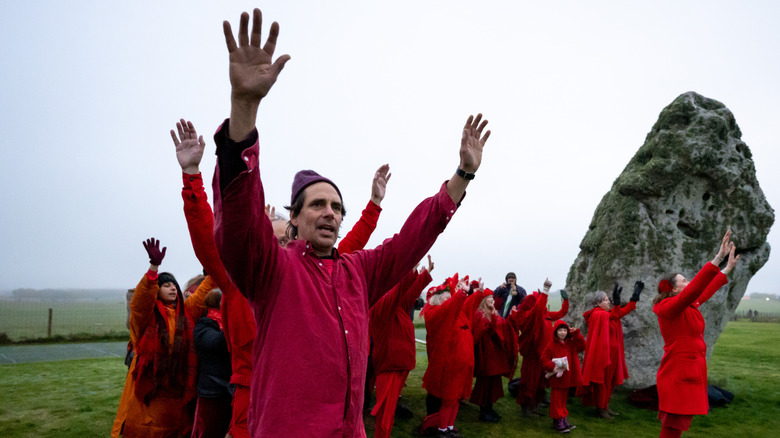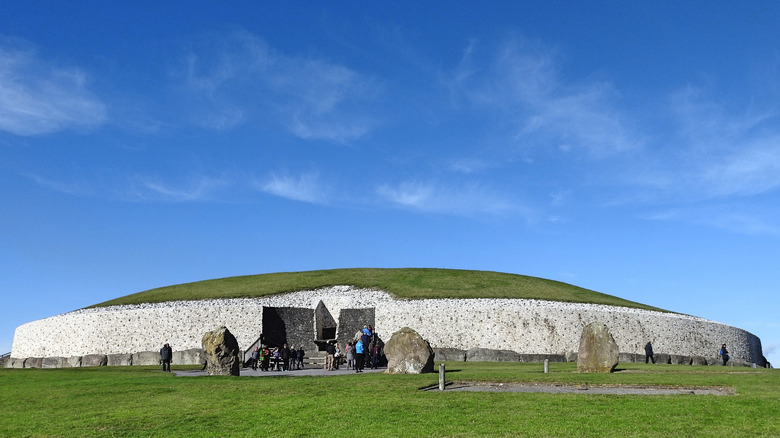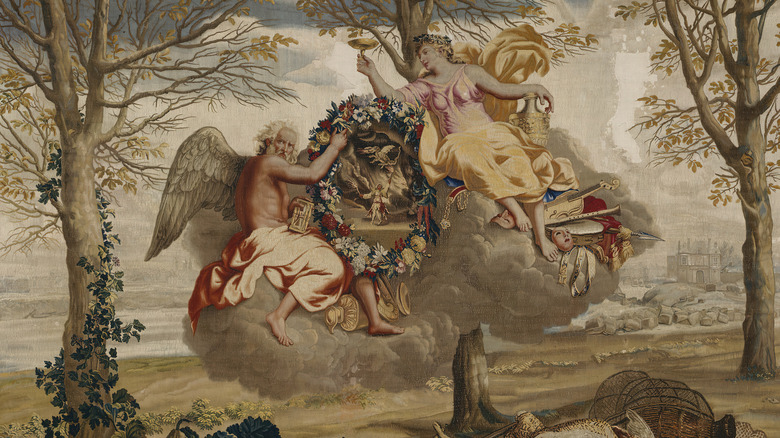The Spiritual Meaning Of The Winter Solstice Explained
The thin beam of light slowly widens as it makes its way down the stone corridor of the Neolithic tomb. And as the sun rises at Newgrange in Ireland during the winter solstice, the sunbeam grows and ultimately illuminates the entire chamber. It's a dramatic illustration of not just ancient astronomy and engineering but the spiritual importance of the winter solstice to the people who built it.
"At the heart of all religious systems is an understanding and celebration of the seasonal cycle of natural and human life – and that is what Newgrange does," archaeology professor Gabriel Cooney of University College Dublin told The Irish Times. The yearly event helps illustrate the idea of renewal and rebirth, Cooney told the newspaper. Throughout history and across the globe, the winter solstice has been a sacred time of the year. And while the specifics of each of the traditional celebrations centered around the event may differ, they have common threads that include light vanquishing darkness and the renewal of life, per History.
The importance of light
In the Northern Hemisphere, the Winter Solstice falls on either December 21 or 22, while in the Southern Hemisphere, it's June 20 or 21. It's the shortest day of the year and the longest night. From the Neolithic peoples of Ireland and England (Stonehenge, like Newgrange, has important ties to the winter solstice) to the Inca in Peru and the Hopi of Northern Arizona, ancient people keyed in on this yearly event and created important rituals around it, per History and the "Oxford Handbook of Christmas."
In many of these traditions, including the Norse observance of Yule in Scandinavia, Toji in Japan, and the Incan celebration of Inti Raymi, fire and light play pivotal roles — whether to frighten away spirits, pay homage to the sun, or ring in the time when the days start to again become longer. Spiritually, the symbol of light associated with these traditions represented rebirth and looking inward, per the New York Post.
Connections to nature and others
Many of the various winter solstice celebrations were community-centered and focused on nature's cycles as they related to agriculture. The Roman festival Saturnalia — held around the winter solstice — honored Saturn, the god of agriculture. "The Sun, Moon, stars, trees, crops, and animals were all included in the celebration," author Richard Heinberg notes in his book "Celebrate the Solstice: Honoring the Earth's Seasonal Rhythms through Festival and Ceremony." "Each person felt a heightened connection with the Source of all life. In short, the festival was the community's way of renewing itself and its bonds with nature."
Shab-e Yalda, the Iranian holiday with ancient roots in Zoroastrianism, celebrates the triumph of the sun over the darkness and is centered on family, charitable works, and aspirations for the future. "After the longest and coldest night of the year, the sunrise is a reminder of hope," the Iranian epic storyteller Gordafarid told the Los Angeles Times. "Hope for the end of darkness, hope for the sun, hope for a better and brighter tomorrow."


